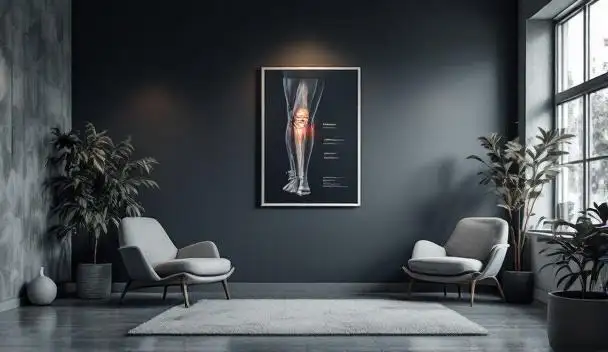Leg Press Exercises
Resistance band leg presses offer a versatile and effective way to strengthen the lower body. Understanding the benefits and targeted muscle groups for leg press exercises can help in optimizing a fitness routine.

Benefits of Leg Press
Leg press exercises are beneficial for several reasons. They enhance lower body strength, which is essential for daily activities. Strong leg muscles can improve balance and stability, protect against injuries, and contribute to better metabolic and cardiovascular health. Improved leg strength also fosters better circulation, reducing the risk of heart disease, especially in older adults [1]. Here are some key benefits of the leg press:
BenefitDescriptionStrengthens Multiple MusclesTargets quads, hamstrings, glutes, hips, and calves [2].Enhances Functional MovementImproves the ability to perform daily tasks and sports activities.Supports PostureAids in maintaining good posture through strengthened leg muscles.Reduces Injury RiskBuilds strength that can prevent injuries during activities.
Muscle Groups Targeted
Leg press exercises engage multiple muscle groups simultaneously. The primary muscles targeted during the movement include:
Muscle GroupRole in Leg PressQuadricepsPrimary mover for knee extensionHamstringsAssist in knee flexion and hip extensionGlutesCritical for hip extension and stabilityCalvesStabilization and push factorHip AdductorsAssist in maintaining leg alignment
Overall, the resistance band leg press is an excellent addition to any fitness routine, promoting strength and stability in the legs. Individuals seeking effective and portable workout alternatives can greatly benefit from incorporating this exercise into their regimen. For a more comprehensive understanding of knee health and fitness, consider exploring topics like my knee feels like it needs to pop but won't or best exercise for hamstrings.
Leg Press Alternatives
When it comes to strengthening the legs, there are several effective alternatives to traditional leg press exercises. Understanding these alternatives can help individuals vary their routines and continue developing leg strength in different ways.
Resistance Band Leg Press
The resistance band leg press targets key muscle groups such as the quadriceps, glutes, and hamstrings. It serves as a convenient substitute for using a leg press machine, making it an ideal option for those who prefer exercising at home or on a budget. This versatile exercise mimics the movement pattern of the 45-degree leg press and can be performed unilaterally (single-leg) to increase the intensity [3].
One of the main advantages of the resistance band leg press is its portability. By utilizing resistance bands, individuals can perform this exercise anywhere, providing great accessibility compared to a dedicated leg press machine [4]. Additionally, resistance band leg presses can replace the weight of a leg press machine while effectively working the same muscle groups.
Basic Steps for Performing Resistance Band Leg Press:
As with any exercise routine, it is recommended to consult with a doctor, especially if one has a history of knee issues.
Squats vs. Leg Press
Squats and leg presses are both effective exercises for building leg strength, but they engage muscles in slightly different ways. While both target the quads, hamstrings, and glutes, squats offer additional benefits such as engaging the core for stability and improving overall functional strength.
Exercise TypeMuscles WorkedCore EngagementEquipment NeededSquatsQuads, Hamstrings, GlutesYesNone (bodyweight or weights)Leg PressQuads, Hamstrings, GlutesMinimalLeg press machine
While squats can be performed anywhere with little to no equipment, the leg press requires access to a machine. An individual may find squats to be a more versatile and functional option for overall strength training.
Lunges and Broad Jumps
Incorporating lunges and broad jumps into a leg strength routine can provide additional variety and intensity. Both exercises focus not only on strength but also on balance and coordination.
Using a combination of these alternative exercises alongside resistance band leg presses can help achieve balanced leg strength and overall fitness. For those with specific conditions or injuries related to the knees, it's important to consider exercises that are appropriate for their situation, such as reviewing popliteus action or exercising with supports like an ace knee sleeve or a hyperextension knee brace.
Resistance Band Leg Press Benefits
The resistance band leg press is a valuable exercise that can elevate any lower body workout. Here are some of the key benefits associated with this exercise.
Mimicking Leg Press Machine
The resistance band leg press closely mimics the movement pattern of a traditional leg press machine. This allows individuals to effectively work their quads, glutes, and hamstrings, making it a versatile exercise suitable for various fitness levels. Unlike the conventional machine, this exercise provides focused tension throughout the movement, enhancing muscle activation and promoting strength gains.
Muscle GroupExercise TypeResistance Band Leg PressLeg Press MachineQuadricepsFunctional ExerciseYesYesHamstringsFunctional ExerciseYesYesGlutesFunctional ExerciseYesYes
Unilateral Leg Press
Performing the resistance band leg press unilaterally offers an additional challenge. This technique targets one leg at a time, allowing for better focus on muscle engagement and improved balance. Additionally, this method helps in identifying and addressing strength imbalances between the legs. By incorporating unilateral leg presses, individuals can enhance their overall strength and stability.
Portability and Convenience
One of the standout features of the resistance band leg press is its portability. Resistance bands are lightweight, easy to store, and can be used nearly anywhere. This flexibility allows for a workout without the need for bulky gym equipment, making it accessible for home workouts, travel, or outdoor exercises. The convenience of using resistance bands ensures that individuals can maintain their routine even when away from the gym [4].
Incorporating the resistance band leg press into a fitness regimen can therefore enhance workouts and support improved leg strength while offering practical solutions for various training environments. For more insights on overcoming knee-related challenges during exercises, check out our article on why does my knee lock up and my knee feels like it needs to pop but wont.
Performing Resistance Band Leg Press
Executing the resistance band leg press correctly is fundamental for maximizing effectiveness while minimizing the risk of injury. It is essential to focus on proper form, transitioning smoothly into the movement, and prioritizing safety.
Correct Form and Technique
To perform a resistance band leg press, first loop one end of the band around your shoulders and the other end around your heels. Begin the movement by pushing against the resistance of the band with your feet, extending your legs diagonally. Slowly return to the starting position after reaching full extension. Proper form ensures that the target muscles, such as the quadriceps and hamstrings, are engaged effectively. It is also advisable to consult a doctor before starting any exercise, especially for those with existing knee pain or concerns [3].
Starting Position and Execution
The resistance band leg press closely mimics the action of the traditional 45-degree leg press machine, making it an excellent alternative for strength training at home or while traveling. This exercise effectively targets the quads, glutes, and hamstrings. The versatility of this movement allows it to be performed unilaterally (with one leg) to increase the challenge and improve balance. Ensuring that the resistance band is adequately secured and using a controlled range of motion is vital for achieving the best results. For additional guidance on strengthening the hamstrings, check our article on the best exercise for hamstrings.
Safety and Consultation
Safety is paramount when performing any exercise. If unsure about the suitability of the resistance band leg press, it is advisable to consult a healthcare professional. Engaging a personal trainer for assistance in performing the leg press or understanding proper technique can provide reassurance and enhance the training experience. For individuals with specific concerns such as pain or discomfort in their knees, referring to resources on conditions like why does my knee lock up may be beneficial.
Resistance Band Training Studies
Resistance band training has gained traction as an effective method for building strength and enhancing athletic performance. This section explores the comparison of elastic resistance versus conventional resistance, the outcomes of strength gains in these training methods, and the distinct advantages of using elastic resistance.
Elastic vs. Conventional Resistance
Studies indicate that elastic resistance training can yield strength gains comparable to those seen with conventional resistance training. Research showed that elastic resistance techniques promote similar muscle strength improvements across various populations, including individuals with chronic obstructive pulmonary disease (COPD), sedentary adolescents, healthy adults, and high-performance athletes [6].
Population GroupElastic Resistance TrainingConventional Resistance TrainingCOPD PatientsComparable strength gainsComparable strength gainsSedentary AdolescentsComparable strength gainsComparable strength gainsHealthy AdultsComparable strength gainsComparable strength gainsHigh-Performance AthletesComparable strength gainsComparable strength gains
Strength Gains Comparison
Research has demonstrated that training with resistance bands is effective in generating muscle strength across both upper and lower body exercises. Resistance bands provide constant tension throughout the entire range of motion during exercises, which can enhance both the eccentric and concentric phases of movement. Not only do they engage larger muscle groups such as the quadriceps and glutes, but they also target smaller stabilizing muscles essential for balance and joint stability [7].
Advantages of Elastic Resistance
The advantages of using elastic resistance for strength training are numerous. One significant benefit includes lower dropout rates among adolescents, indicating higher adherence to exercise programs using resistance bands. This suggests a favorable impact of elastic resistance training on motivation and sustained involvement in physical activity. Furthermore, the convenience and portability of resistance bands allow for effective workouts in various environments, making them an accessible option for individuals seeking to enhance their strength training routines.
Elastic resistance training not only promotes muscle growth effectively but also plays a critical role in injury prevention by strengthening stabilizer muscles, which support joint function and overall body mechanics. This makes it especially beneficial for individuals looking to manage knee pain or improve overall knee health. For more insights on knee-related issues, check out our articles on my knee feels like it needs to pop but won't and why does my knee lock up.
References
[2]:
[3]:
[4]:
[5]:
[6]:
[7]:





